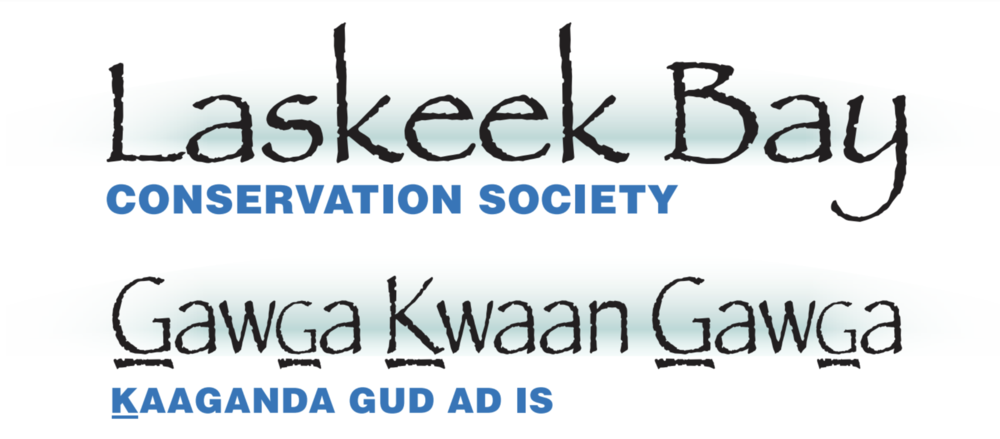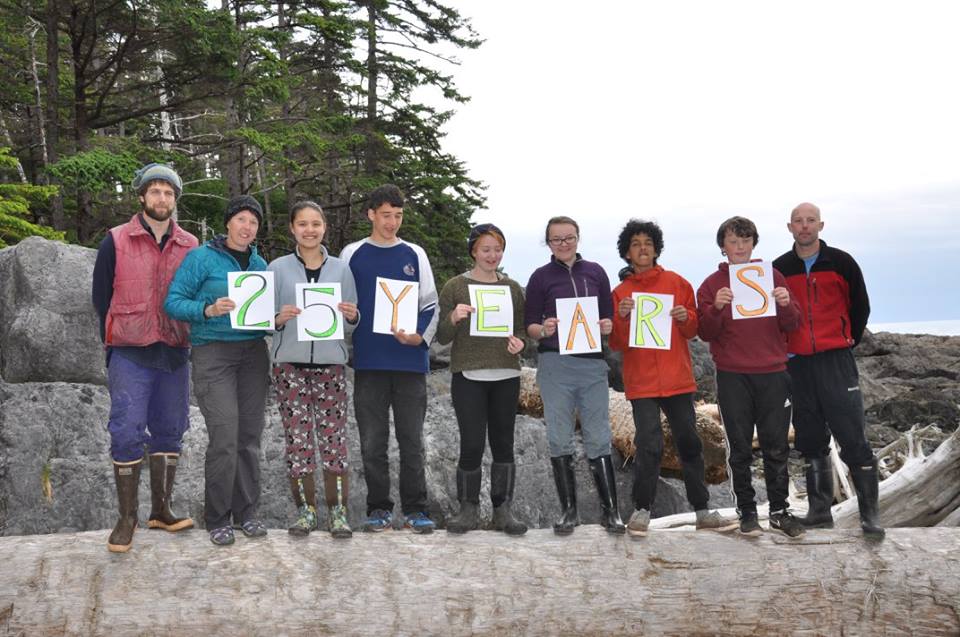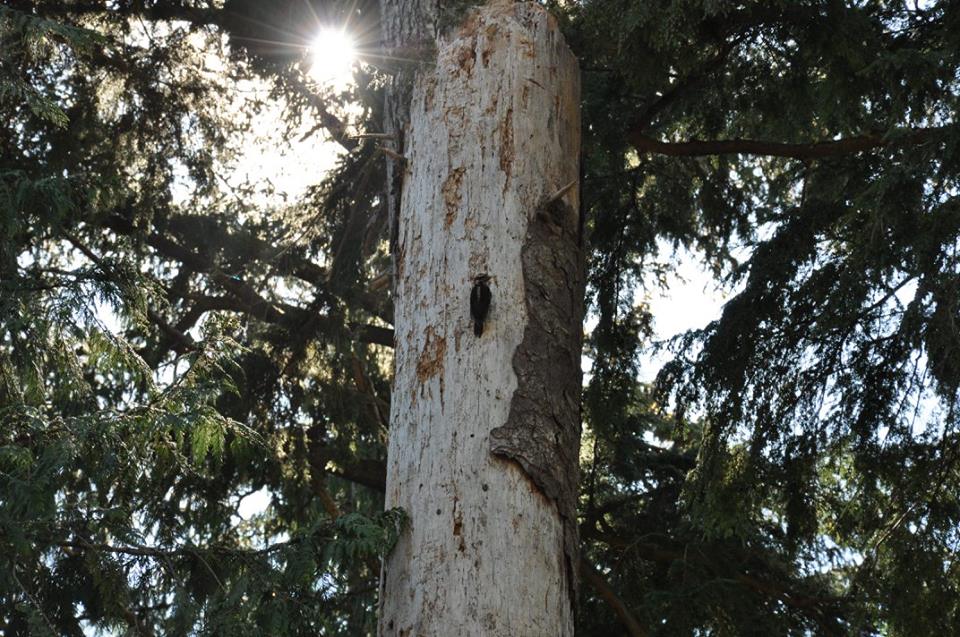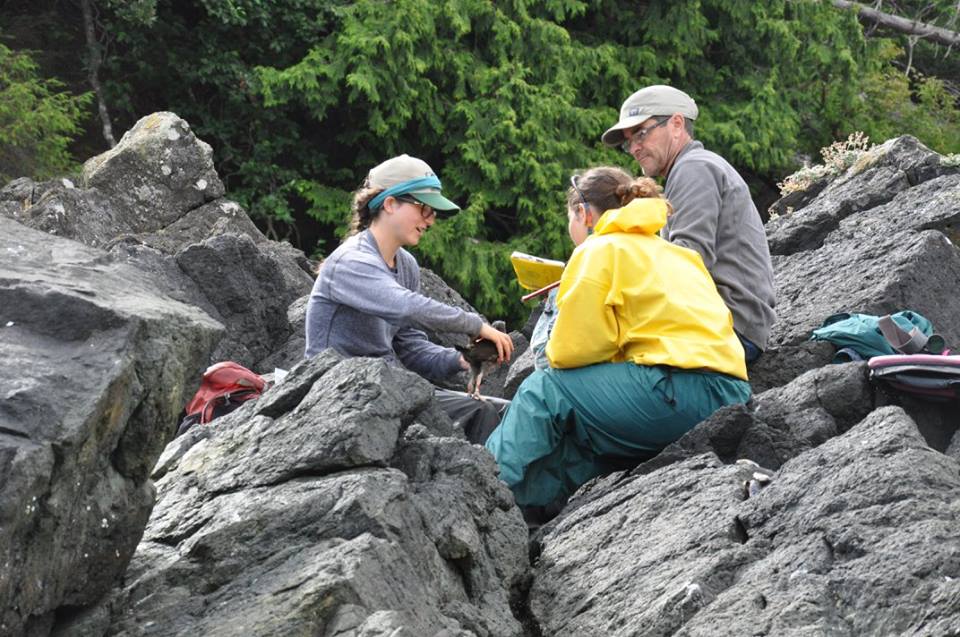2016 marked our 27th field season on East Limestone Island and over that time, we have seen considerable changes both in the natural world and in our organization. As a result, the LBCS board, staff and scientific advisors have once again embarked on some careful organizational planning with guidance from the local scientific community on Haida Gwaii over the course of 2016.
As we draft our plans for 2017, we wanted to share a few thoughts about some minor programming changes that will occur this coming year. We want to stress that these changes will not markedly alter our volunteer experience, and we very much look forward to hosting a new team on East Limestone Island from May 4 – July 21, 2017!
Ancient Murrelet Monitoring & Restoration
On East Limestone Island, we have been watching a continuous decline in the breeding population of Ancient Murrelets (ANMU) since monitoring began in 1990. In 2016, as in 2015, the number of chicks departing from the colony was very low and there was also an apparent drop in adult ANMU activity in the colony. Due to the many interacting factors that could be influencing the breeding population on ELI, such as impacts of heavy raccoon predation in the 1990s, recent habitat changes due to major blowdown, and larger-scale changes to the marine environment including ocean warming, it will be hard for us to determine the exact cause of the population decline on the island.
What we do know is that the energy required to manually monitor the funnels with volunteers each night is yielding a diminishing return and as a result, we will begin to transition over to camera-based monitoring of the funnels.
Volunteers and staff will still monitor funnels every other night in order to help us understand the accuracy of cameras, and Project Limestone, our program for local students, will continue to monitor ANMUs in person as they have in the past. We appreciate the support of the Habitat Conservation Trust Fund and BC Gaming for this project.
Last year we also decided to suspend our call-playback program until we have had time to evaluate the potential effectiveness and the practicality of using this seabird colony restoration technique on ELI. This suspension will continue for the 2017 field season.
We will continue our annual raccoon cull, which is conducted in February or March and reduces the numbers of this introduced predator near the Limestone Island seabird colony. We will attempt to lead a second cull during this period, in order to enhance our impact.
Black Oystercatchers
In 1992, we began surveying Black Oystercatchers (BLOY) in Laskeek Bay. In 2010, we began an annual survey of the species at the south end of Lyell Island in partnership with Gwaii Haanas. Starting this year, that survey will occur every second year. We will however continue to independently survey BLOYs in Laskeek Bay annually. This has given us lots of interesting information, including the fact that our oldest recorded breeding bird is 18 years old!
Invasive & Rare Plants
In 2016, we re-invigorated a project from 2009 to inventory and remove invasive plants in Laskeek Bay. Thanks to the support of Environment Canada’s Eco-Action program, this project will continue until at least 2018. We will continue to inventory and remove invasive plants at key locations in the K’uuna Gwaay Conservancy, and we will update our inventory of rare plants on ELI.
Pigeon Guillemot & Cassin’s Auklet Nestboxes
In 2015, LBCS noted mass abandonment of the Pigeon Guillemot nest boxes on Lookout Point. Given the high temperatures witnessed that season, the leading theory for this abandonment was that the nestboxes were overheating. In 2016, we conducted an experiment to measure the temperature in nestboxes (some with new shades, some unchanged) relative to rock crevices that PIGUs would likely nest in. This study showed no huge difference in temperature, and showed that the shades do help to keep the boxes cooler. However, in 2016, eggs were again abandoned during incubation. We now suspect that disturbance by some avian predator in the vicinity of the nestboxes may have been involved. In May of 2017 volunteers, staff and cameras will be used to monitor the boxes to hopefully determine what is causing the abandonment. If we cannot confirm the cause or mitigate the problem, we will close up the boxes by the end of May, before the PIGUs begin to lay their eggs.
The monitoring of Cassin’s Auklet nestboxes on Lookout Point and on the East Coast continue to be successful and monitoring efforts will be unchanged.
Debris Removal
In 2016, BC Parks supported a project aimed at removing debris that washes up on beaches in Laskeek Bay. Our team spent a few weeks surveying shorelines, setting up transects for future accumulation assessment, and collecting up garbage. In 2017, we will continue this initiative independently.
And the Rest…
The remainder of our programs on East Limestone Island will remain essentially unchanged. This includes the at-sea surveys (near and off shore), wildlife trees, the daily bird checklists, the marine mammal sightings and the gull colony surveys.
And with that, we have a plan for 2017! We want to thank the friends and advisors who have provided input on the direction of our organization, and we want to thank the numerous donors and funders who make our work possible. If you have any questions or comments about our plan, we welcome feedback by e-mail (Laskeek@laskeekbay.org).
We look forward to sharing more information with you as our field season progresses – and until then, stay tuned for updates about activities we host in the community including our afterschool Hike, Build & Bird club with Haida Gwaii Rec!














